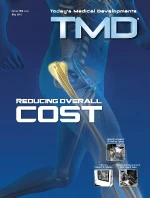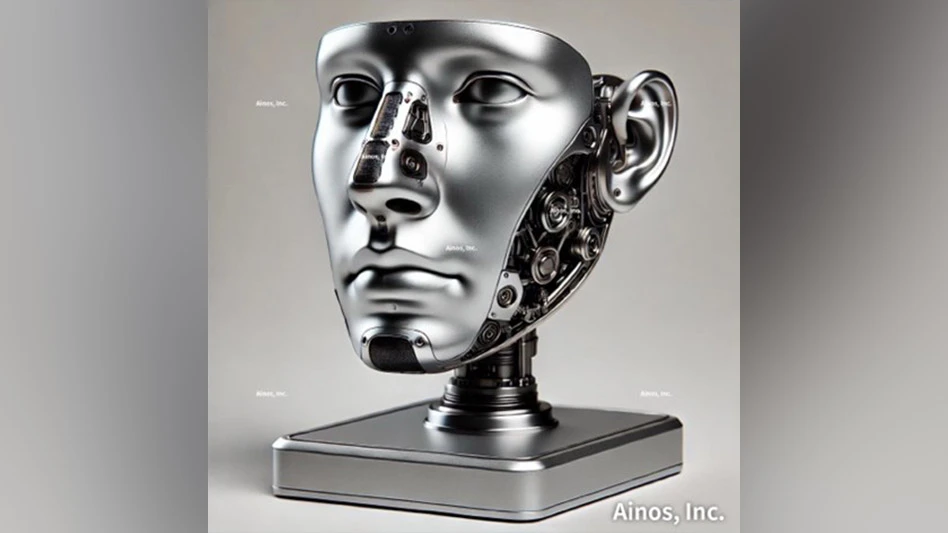 In the development of the System 7 milling/turning center there were some distinct challenges for the control supplier. On this machining center, a single five-axis milling spindle is combined with one or two turning spindles and trunnion-mounted workpiece positioning for true six-sided, fully-automated machining for blank bar stock, or from a chuck. Traditionally, when small to medium batches were required, such work was done on multiple machines, owing to economic inefficiencies involved in using a multi-tasking machining center for such work. The Stama design team sought to produce a highly flexible machine, capable of milling, drilling, thread cutting, external/internal turning, facing, and contouring that could offer more customers the ability to use it on shorter runs. Because short set-up and changeover times were distinct goals of the System 7 design team, the control selection process became all the more complex, according to Stama director of sales, Gerhard Ulmer.
In the development of the System 7 milling/turning center there were some distinct challenges for the control supplier. On this machining center, a single five-axis milling spindle is combined with one or two turning spindles and trunnion-mounted workpiece positioning for true six-sided, fully-automated machining for blank bar stock, or from a chuck. Traditionally, when small to medium batches were required, such work was done on multiple machines, owing to economic inefficiencies involved in using a multi-tasking machining center for such work. The Stama design team sought to produce a highly flexible machine, capable of milling, drilling, thread cutting, external/internal turning, facing, and contouring that could offer more customers the ability to use it on shorter runs. Because short set-up and changeover times were distinct goals of the System 7 design team, the control selection process became all the more complex, according to Stama director of sales, Gerhard Ulmer.
“Compounding our challenge,” Ulmer states, “was that we had a great demand for high accuracy under production conditions, because our medical and automotive customers require it – 0.02mm true position under 1.67Cpk conditions is typical for our twin spindle machines. With some of the extreme alloys our customers process, holding that standard would not be so easy to achieve.”
The inherent advantages of twin-spindle machines have always included a smaller footprint, power savings, increased productivity, and a reduction in overall cost per part. Correspondingly, the base cost of the machine and the changeover times meant these machines were generally best suited for fewer, and longer, production runs. However, since Stama machines serve customers in a wide range of industries, the design team sought to design a machine with the entire spectrum of their customers in mind – from the high-precision, short run medical customers to their Tier Two and Tier Three automotive customers, according to Ulmer.
From the beginning of the process, the design team considered their customers’ main concern – how to devise a solution that would allow twin-spindle and single-spindle work to be processed with economy, on the same machine. Clearly, this machine would require a very high level of motion control, accuracy, and multi-function capability. Customers would need the options to machine one piece simultaneously with two spindles, run separate smaller parts on each spindle independently, or change tooling on one spindle while the other was machining. Additionally, for true six-sided machining, one spindle would need to function as the rotary actuator for the workpiece. To pack all these features into a single machining center, and not price it out of the competitive market ranges, was a major concern for the design team.
The control solution of choice was the Siemens Sinumerik 840D with NCU 573.5, a CNC of open architecture, PC-based design that is capable of handling up to 31 axes and 10 channels. Siemens motors, power supplies, and drives were also chosen for the System 7 as a turnkey package, as was the TRAORI software suite from Siemens.
TRAORI software is based on transformation orientation that drives the cutting motions relative to the position of the workpiece, not the NC program. With the look-ahead function, TRAORI also speeds the cutting time and overall finishing time on the part, especially critical for Stama on the complex materials cut by their medical customers. According to Ulmer, “We did some modifications of their software for the particular needs of our customers, but the base model and the flexibility of the Siemens CNC package made this supplier the only choice for Stama on the System 7. It is the first true control package for a mill/turn machine in the world.” He further cites customers reporting a minimum 70% reduction in throughput time savings on the System 7, as compared to their previous machines or methods.
As a result, the programming of single or twin spindle use, in all configurations desired by the design team, was achieved. As Ulmer points out, “It does not matter if the machine is running as a five-axis mill or a lathe. Other CNCs we considered had to switch their operational mode, while the Siemens Sinumerik 840D can run any program seamlessly.” He also mentions the control was very robust and safety-conscious, especially essential for the medical market. When cutting cobalt chromium, Nitinol, and other alloys commonly used in the production of medical implants, surgical tools, and instruments, tool wear is common.
He also notes the cooperation of Siemens engineering was vital to the development process on this milling/turning center. “They [Siemens engineering personnel] were in-house at Stama from the outset. I can say without hesitation that the Siemens CNC was key to the development of the System 7. It was a true example of simultaneous engineering on our part and theirs, to devise the best result,” Ulmer concludes.
Stama America
Itasca, IL
stama-america.com
Siemens Industry, Inc.
Drive Technologies — Motion Control (Machine Tool)
Elk Grove Village, IL
usa.siemens.com/cnc

Explore the May 2010 Issue
Check out more from this issue and find your next story to read.
Latest from Today's Medical Developments
- German robotics and automation in a downturn
- Blueshift’s AeroZero
- November USMTO grow from October
- Platinum Tooling’s custom and special tooling
- Top 5 global robotics trends 2025
- Accumold’s micro molding innovations
- Methods Machine Tools, Multiaxis, announce AI solution investment
- MGS to showcase global expansion and healthcare CDMO expertise





